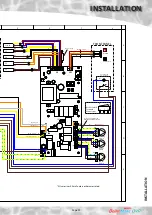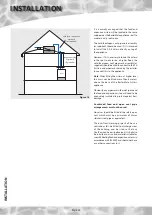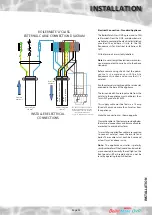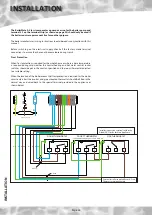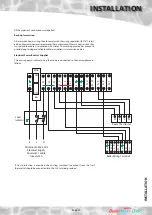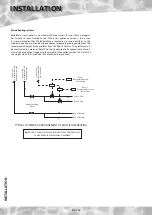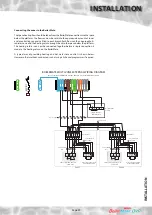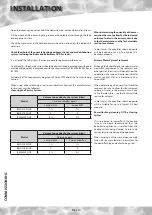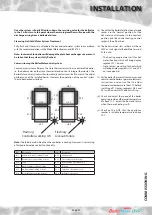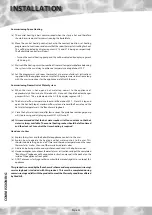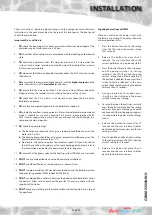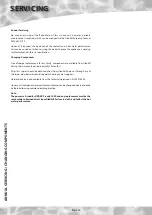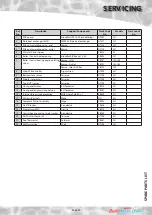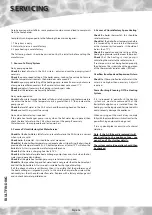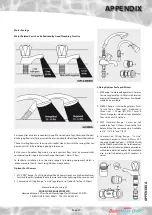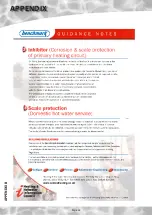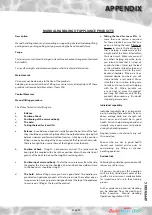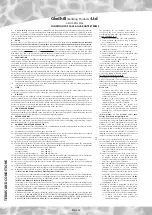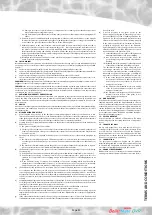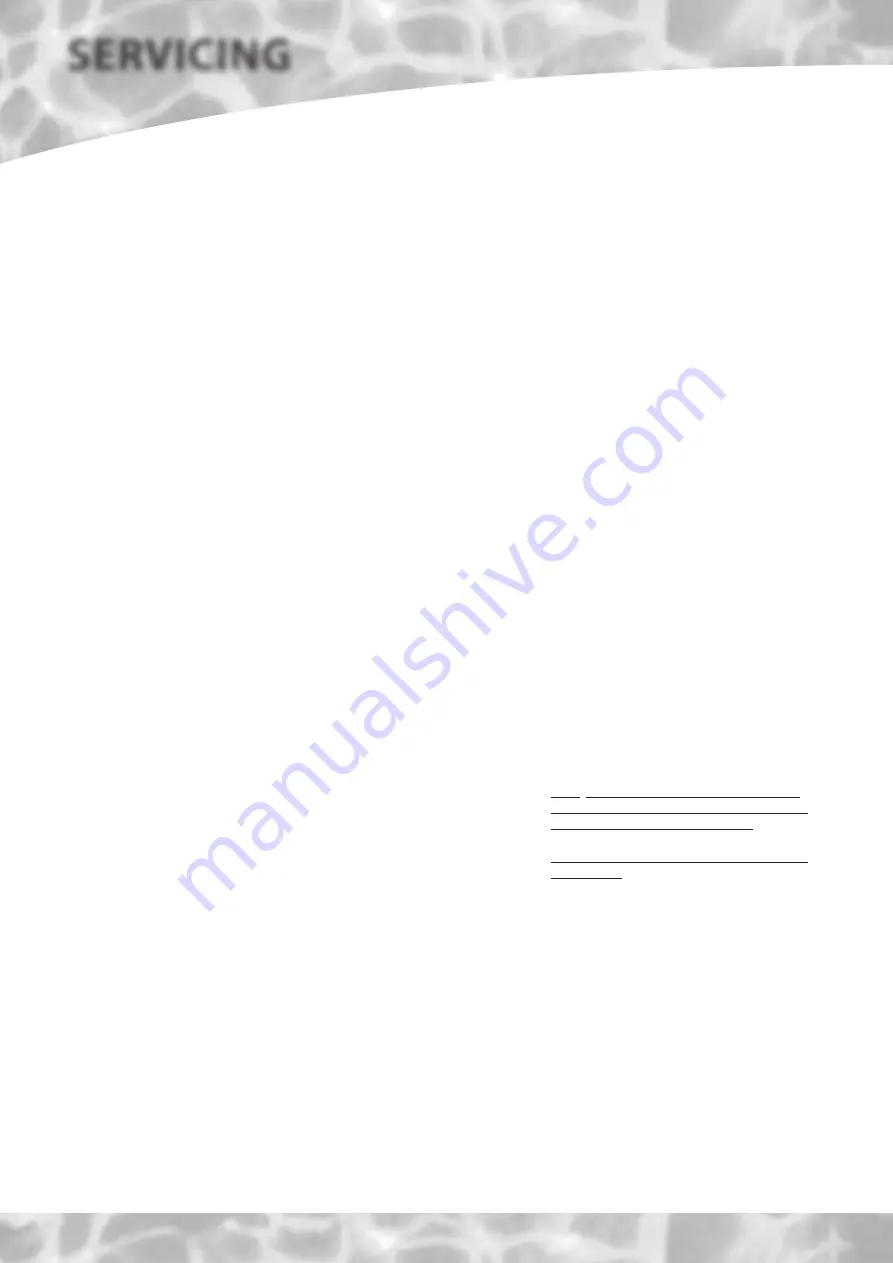
Page 36
SERVICING
FA
UL
T FINDING
Despite everyones best efforts some problems could occur and lead to complaints
from the householder.
Complaints can be grouped into the following three main categories:-
1. The system is noisy
2. Hot water service is unsatisfactory
3. Space heating is unsatisfactory
The following checks should be carried out by the installer before calling the
manufacturer.
1. Causes of a ‘Noisy’ System
Noisy pump operation
Check the level of water in the F & E cistern - adjust and vent the pump/system if
necessary.
Check the pump speed setting of the boiler pump - reduce if necessary but ensure
that the temperature rise across the boiler does not exceed 8°C.
Check the pump speed setting of the heating pump - reduce if necessary but ensure
a temperature difference across the flow and return does not exceed 11°C.
Check and adjust if necessary the heating system bypass valve.
Check that the radiators are correctly balanced.
Noisy boiler operation
Check the flow rate through the boiler at full gas rate by measuring the temperature
rise across the boiler. If the temperature rise is greater than 8°C, then increase the
pump speed.
Check the level of water in the F & E cistern and the working head on the boiler.
Check and vent the system if necessary.
Noise when hot water tap is opened
If the plate heat exchanger pump is noisy when the hot water tap is opened, then
check the level of water in the F & E cistern and vent the pump if necessary.
Water hammer - loose pipework and/or tap washers.
2. Causes of ‘Unsatisfactory Hot Water Service’
Check that the BoilerMate is full of water i.e. level of water in the F & E cistern is correct
when system is cold.
Check boiler thermostat - this should be set at maximum.
Check that the boiler flow temperature is adequate when it stops firing. Boilers should
provide a flow temperature of 82 ± 3°C but temperatures as low as 75°C will allow the
BoilerMate A-Class to provide a satisfactory performance.
Check that the store is charging to at least 75°C.
Check that the hot water plate heat exchanger pump stops and starts when the hot
water tap is opened and closed.
Check that the plate heat exchanger pump is set at maximum speed.
Check that the space heating and hot water load is not greater than the boiler output
and that the BoilerMate A-Class model is suitable for the type of dwelling.
If all the above checks are satisfactory then it is possible that the performance of
the heat exchanger is impaired by scale. In this case the hot water flow rate will be
noticeably less than the cold water flow rate. Replace with a factory exchange unit
and re-check hot water performance.
3. Causes of ‘Unsatisfactory Space Heating’
Check the boiler thermostat - this should be
set at maximum.
Check that the boiler flow temperature before
it is turned off by its own internal thermostat
or the store sensor is adequate - it should not
be less than 77°C.
Check the operation and the settings of the
heating programmer and the room thermostat.
Check that the heating system pump is
circulating the water to the radiator circuit.
If some rooms are not being heated properly,
then balance the system/check the operation
of the thermostatic radiator valves (if fitted).
Overflow from Feed and Expansion Cistern
Check that the controlled level of water in the
cistern is no higher than necessary. Adjust if
required.
Powerflushing/Cleaning Of The Heating
System
If it is proposed to ‘powerflush’ the heating
system we would recommend that the
BoilerMate appliance is isolated from the
heating system being cleaned. Failure to do this
could seriously damage the appliance.
When carrying out the work always comply
fully with the manufacturers instructions for the
powerflushing equipment being used.
If in any doubt please consult our Technical
Helpline.
Note: If the A.C.B. board is replaced it will
need setting to the appliance type - see
pages 9 and 10 for further details.
The system controls/operation should then
be checked.
Summary of Contents for BMAS 150 OVR
Page 38: ...Page 38 APPENDIX APPENDIX B ...
Page 40: ...Page 40 APPENDIX D NOTES ...
Page 41: ...Page 41 NOTES ...


